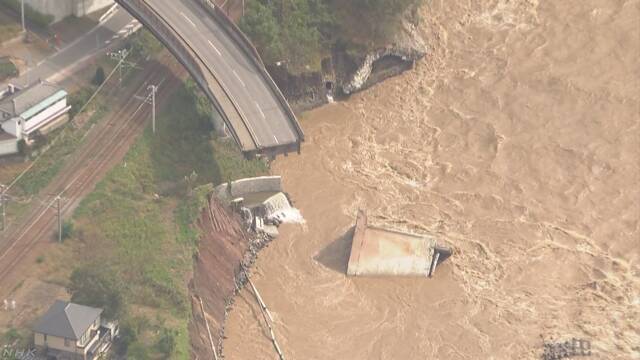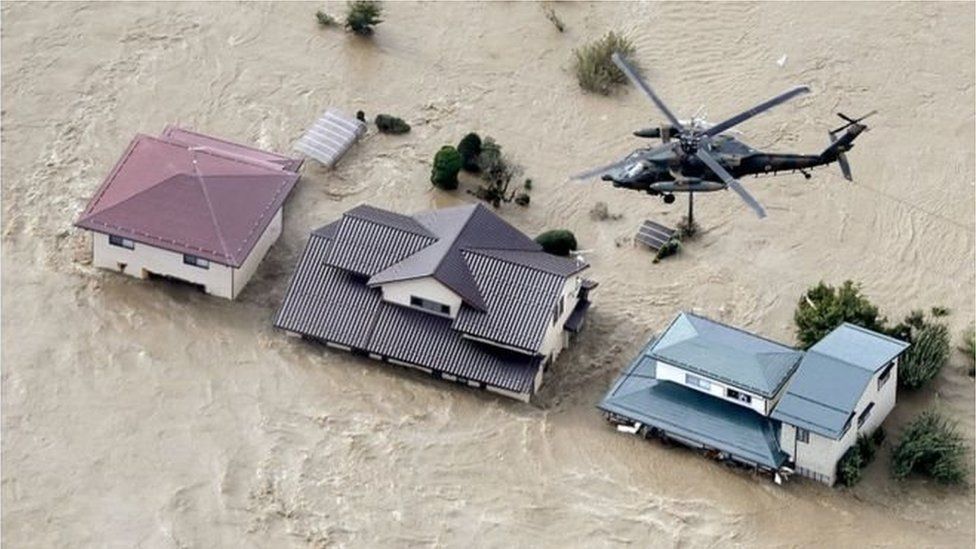Japan is dealing with the aftermath of the disaster that has been Tyhoon Hagibis, aka Typhoon 19, what may have been the worst storm in more than 60 years. Now that the typhoon has passed, Japan is taking stock of the massive damage, which as of this writing has caused 24 deaths and 17 missing, a number that literally rose while I was typing this sentence. It is sadly likely to increase even further.

The massive typhoon, which made landfall on the Izu Peninsula 150 km/90 miles south of Tokyo, caused loss of electrical power in various regions across Japan, including 230,000 households in the Tokyo area and 480,000 in northern Tohoku, as power lines came crashing down in the strong winds. The amount of rain dumped on Japan by Typhoon 19 was unprecedented, three or four months of normal rainfall delivered over a day and a half. Although Japan has excellent infrastructure for dealing with flooding, including 500,000 dams for controlling water flow, its resources were stretched to the limit by the disaster.
As I’ve written before, one of the good things about Japan is that they take disaster preparedness very seriously. Every citizen has a designated evacuation spot to head to in an emergency (ours is a local community center in a park nearby) where food, water, blankets and other supplies are always stocked. They also work to make sure disaster information is distributed in major languages used in Japan, including English, Portuguese, Korean and Chinese. In extreme disasters such as this, Japan has trained staff including members of the Self-Defense Forces who are trained to help with evacuations, which are currently still underway in affected areas around Japan. The news media was on station pretty much without pause before the disaster, offering helpful tips on how to best manage personal safety.
https://twitter.com/JListPeter/status/1182980432284925955
Japan has also learned hard lessons from past disasters, building out its disaster warning system through cell phones. People living in Japan generally get warnings right before an earthquake hits (or when “Rocket Man” shoots a missile over Japan, which he’s done several times), but I was impressed that their system knew exactly where I was located and gave me specific evacuation information for the city I was living in during the disaster. Happily our house and J-List weren’t in any danger, but some parts of our city did receive evacuation orders as several rivers threatened to overflow.

Japan is one of the safest countries to live in, but sometimes you couldn’t tell from all the disasters that happen left and right. In the midst of dealing with Typhoon 19, there was a 5.7 magnitude earthquake off the coast of Chiba, to the East of Tokyo, causing more drama for everyone. Someone on Twitter quipped, “Can we get a volcanic eruption to rounds things off?”
All of the damage and sadness comes hot on the heels of Typhoon Faxai, which also hit the Kanto (Tokyo) area directly. It was less powerful than Hagibis, but managed to do an especially high amount of damage in Chiba Prefecture, knocking down old electric poles and leaving whole communities without power or Internet for weeks. I remember seeing the sad story of an 88-year-old woman who lived in an old house in Chiba who had lost her roof. She had no income and no family to take care of her, and was destitute. And now a second typhoon has come in and done even more damage to that part of Japan.
Every December Japan votes on the “kanji of the year,” the single kanji character that best summed up the year. I predict that this year’s kanji will be 災 wazawai, meaning “disaster.”
We certainly hope Japan will recover from this terrible typhoon quickly. For more updates, follow my personal Twitter.



![Sawaranaide Kotesashi Kun Episode 12 [END] Featured Image](https://blog.jlist.com/wp-content/uploads/2025/12/Sawaranaide-Kotesashi-kun-Episode-12-END-Featured-Image-750x536.jpg)











